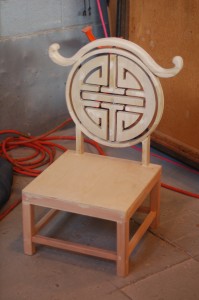I found a new blog on technical direction for the blogroll. Technical Direction Tidbits is written by L. Jean Burch, a project manager at Chicago Scenic Studios. She has been working on this blog for over a year and a half now, so there’s a ton of information to be found. She has a category dedicated to props, but since there’s a lot of overlap between props and scene shops, the other categories are worth exploring too. And last Tuesday’s post was about this blog.
Another post of note is on custom printed fabric. My fiance just ran across this same company, Spoonflower, which will custom print fabric for $18 a yard. She’s been trying to find the perfect tablecloth fabric for our wedding, but has had no luck even after perusing numerous stores in NYC’s Fabric District. If we test this company, I’ll be sure to post the results, as it seems it could be very useful in the right situation.


